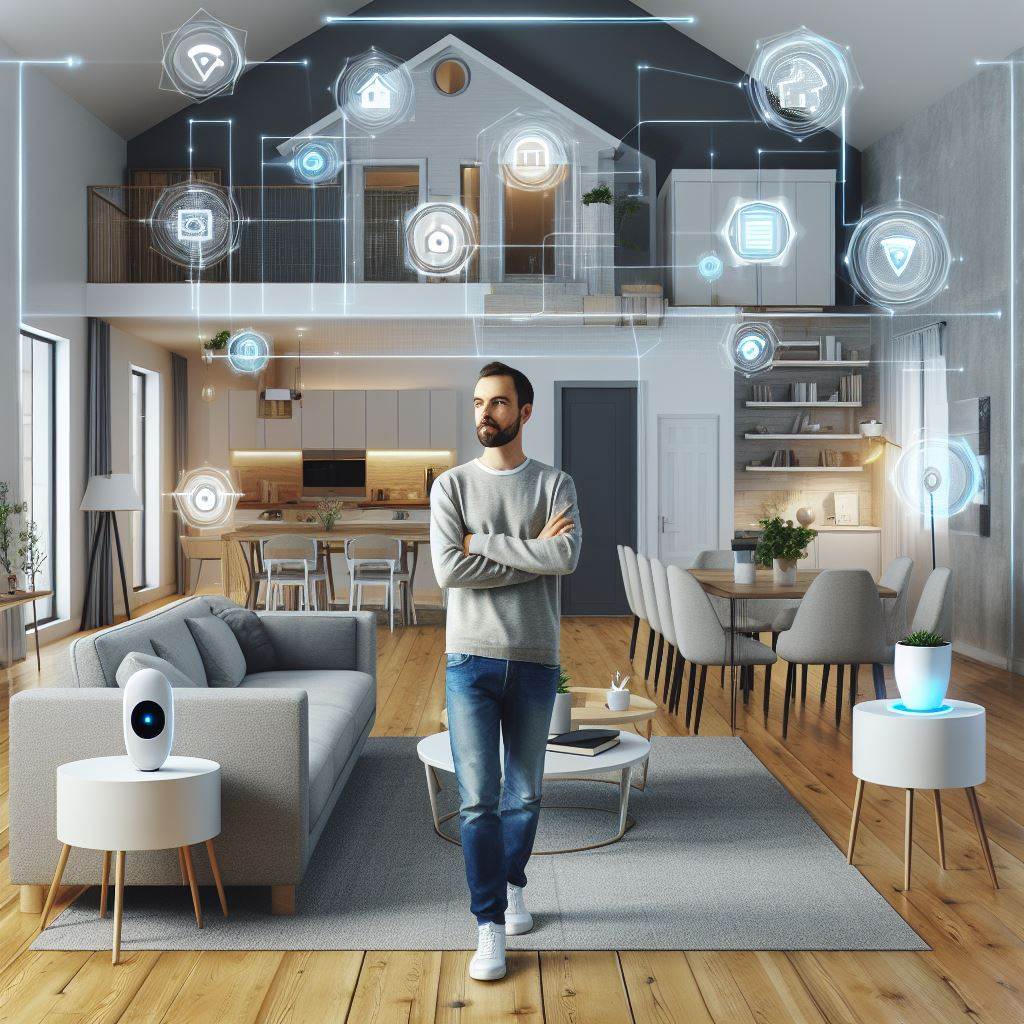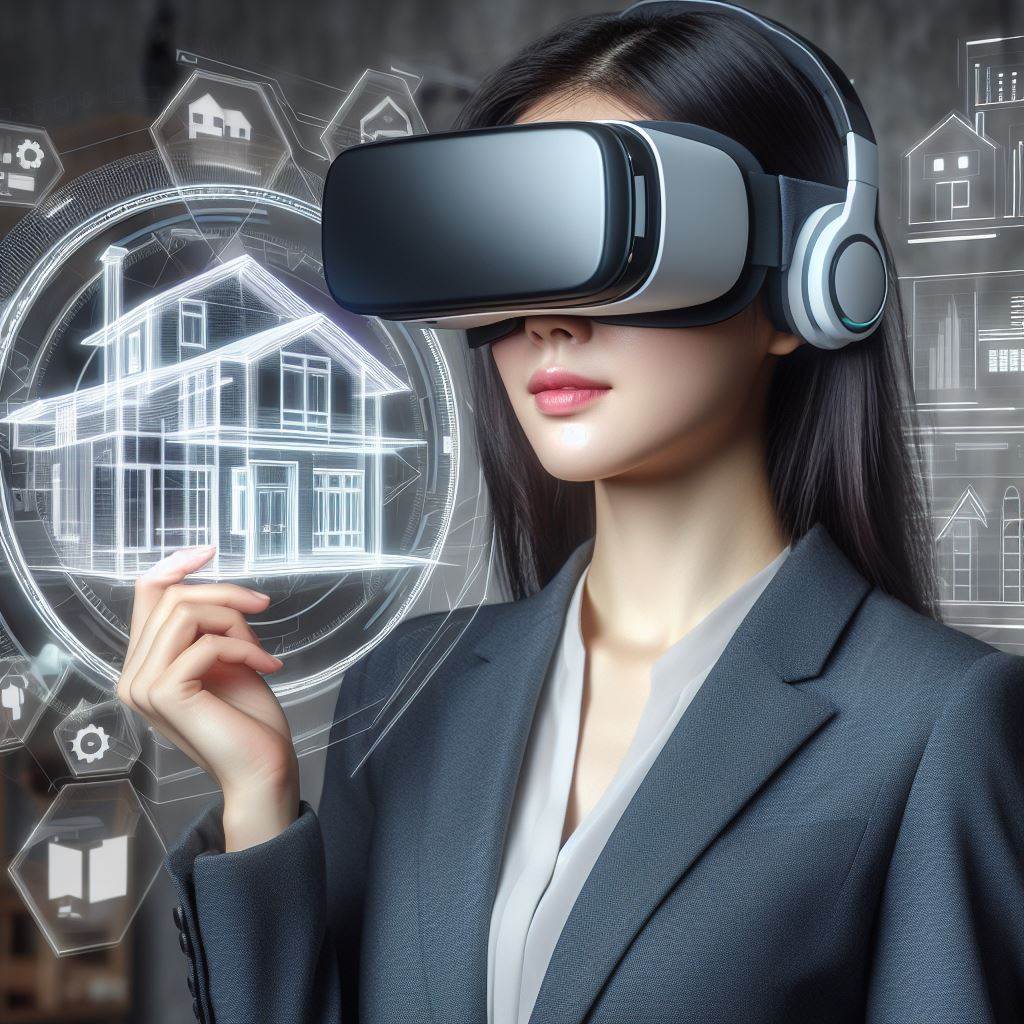Introduction
AR, or augmented reality, has revolutionized various industries, including construction.
In the construction industry, AR refers to the use of advanced technology to overlay virtual elements onto the real world.
With the integration of AR, construction professionals can visualize and interact with digital models in a physical environment.
The importance of AR in construction cannot be overstated. It enables workers to accurately visualize plans, assess potential risks, and make informed decisions.
By providing a virtual representation of construction projects, AR enhances communication, collaboration, and problem-solving on job sites.
This blog post aims to explore the various applications of AR in construction.
We will discuss how AR can be used for project planning, design visualization, and on-site construction supervision.
Additionally, we will delve into the benefits of using AR, such as improved efficiency, reduced errors, and enhanced worker safety.
Throughout the post, we will highlight real-world examples of companies successfully implementing AR in construction.
We will also address potential challenges and limitations of the technology, as well as its future prospects.
In fact, AR has the potential to revolutionize the construction industry by providing a more immersive and efficient way of working.
With its ability to merge digital and physical environments, AR in construction is paving the way for a brighter and safer future in the industry.
Stay tuned for more detailed discussions on the applications and benefits of AR in upcoming sections.
Current Challenges in the Construction Industry
Lack of collaboration and communication
In the construction industry, one of the major challenges is the lack of collaboration and communication among various stakeholders.
This leads to misunderstandings, errors, and delays in projects, ultimately affecting the overall productivity and efficiency.
Transform Your Real Estate Decisions
Unlock personalized real estate insights crafted just for you. Get actionable advice designed to amplify your success.
Get StartedBy not effectively sharing information and working together, the construction process becomes disjointed and less streamlined.
Without proper collaboration, it’s difficult to ensure that everyone is on the same page and working towards the same goals.
This lack of coordination can result in rework, wasting time, resources, and causing project delays.
Implementing augmented reality (AR) technology can bridge this gap by providing a platform for enhanced collaboration and communication.
AR can create virtual representations of construction projects, allowing stakeholders to visualize and understand the designs more effectively.
Real-time feedback and modifications can be made, ensuring that any issues or changes are addressed promptly.
By using AR, stakeholders can work together more seamlessly, resulting in improved project outcomes and increased efficiency.
AR can also facilitate communication by enabling remote collaboration, allowing experts to provide guidance and support from anywhere.
This can be especially beneficial when faced with challenges that require specialized knowledge or troubleshooting.
Overall, AR has the potential to enhance collaboration and communication in the construction industry, mitigating the challenges that arise due to a lack of coordination.
Inefficiencies in project planning and execution
Another key challenge in the construction industry is the inefficiencies in project planning and execution.
Traditional methods of planning and executing construction projects often involve manual processes and are prone to human errors.
This can lead to delays, cost overruns, and quality issues, impacting the overall success of the project.
AR technology can address these inefficiencies by providing virtual simulations and models for improved planning and execution.
Showcase Your Real Estate Business
Publish your company profile on our blog for just $200. Gain instant exposure and connect with a dedicated audience of real estate professionals and enthusiasts.
Publish Your ProfileWith AR, project teams can visualize the construction process and identify potential issues or clashes before they occur.
This allows for better coordination and early problem-solving, minimizing delays and rework.
AR can also assist in resource allocation, enabling project managers to optimize the use of equipment, materials, and labor.
By using AR, construction companies can improve efficiency, reduce waste, and enhance the overall project timeline.
Safety concerns and risk mitigation
Safety concerns and risk mitigation are crucial aspects of the construction industry.
Construction sites are inherently hazardous environments, with the potential for accidents and injuries.
AR technology can play a significant role in improving safety by providing real-time safety instructions and hazard identification.
AR can overlay safety guidelines and warnings in the worker’s field of view, ensuring they are aware of potential risks.
It can also facilitate training by creating virtual scenarios for workers to practice safety protocols in a controlled environment.
By integrating AR into safety training programs, construction companies can better prepare their workers and reduce the risk of accidents.
Furthermore, AR can assist in risk mitigation by identifying potential hazards or conflicts in the construction plans.
By addressing these issues early on, construction companies can minimize risks, ensuring a safer working environment for their employees.
Cost overruns and delays
Cost overruns and delays are persistent problems in the construction industry.
These issues can arise due to various factors, including poor planning, coordination issues, and unforeseen challenges.
AR technology can help address these challenges by providing real-time insights and data throughout the construction process.
AR can enable accurate cost estimation, allowing project managers to monitor expenses and identify potential cost overruns.
By identifying these issues early, adjustments can be made to keep the project on track and within budget.
In addition, AR can assist in schedule management by providing real-time progress updates and identifying potential delays.
This enables project managers to take proactive measures and make necessary adjustments to avoid schedule disruptions.
By utilizing AR to address cost overruns and delays, construction companies can improve project outcomes and profitability.
AR technology has the potential to revolutionize the construction industry by tackling its current challenges head-on.
From enhancing collaboration and communication to improving efficiency, safety, and cost management, AR can drive significant improvements.
By leveraging AR’s capabilities, construction companies can unlock new opportunities for growth and success in the future.
Read: Top 10 Property Management Software of 2024
The Role of AR in Construction
In the construction industry, the application of Augmented Reality (AR) technology has revolutionized traditional processes.
AR introduces a digital layer to the real world, enhancing collaboration, improving planning and execution, ensuring safety, and mitigating cost overruns and delays.
Enhancing collaboration and communication
One significant role of AR in construction is enhancing collaboration and communication.
Through 3D visualization, stakeholders can gain a better understanding of the project, enabling improved planning and decision-making.
By sharing project information in real-time, stakeholders can communicate effectively, reducing misunderstandings and delays.
Furthermore, AR allows remote collaboration, where teams can collaborate and solve problems regardless of their physical location.
Showcase Your Real Estate Business
Publish your company profile on our blog for just $200. Gain instant exposure and connect with a dedicated audience of real estate professionals and enthusiasts.
Publish Your ProfileStreamlining project planning and execution
Additionally, AR streamlines project planning and execution.
Accurate measurements and virtual mapping enable precise project planning, ensuring accurate estimations and resource allocation.
On-site visualization of proposed changes and designs allows stakeholders to visualize and assess different design options, facilitating informed decision-making.
Moreover, AR technology can simulate construction processes, allowing stakeholders to evaluate and optimize the construction methodology before implementation.
Improving safety and risk mitigation
AR also plays a crucial role in improving safety and risk mitigation in construction projects.
With augmented safety training and simulations, workers can undergo realistic training scenarios and enhance their skills without exposing themselves to physical risks.
Real-time hazard detection using AR helps identify potential safety hazards promptly, allowing immediate mitigation measures to be implemented.
Furthermore, AR technology enables better equipment and site management, ensuring optimal use of resources and reducing safety risks.
Mitigating cost overruns and delays
One of the major challenges in construction projects is cost overruns and delays. However, AR can mitigate these issues.
By providing precise visualizations, AR minimizes rework and errors, saving costs associated with rectifying mistakes.
Additionally, efficient project monitoring and progress tracking using AR technology help identify potential delays and take corrective measures quickly.
Overall, through improved efficiency, AR shortens the construction lifecycle, reducing costs and allowing projects to be completed on time.
In essence, AR technology plays a significant role in shaping the future of construction.
It enhances collaboration and communication, streamlines project planning and execution, improves safety and risk mitigation, and mitigates cost overruns and delays.
As construction continues to evolve, the adoption of AR will undoubtedly become more prevalent, leading to increased efficiency, improved decision-making, and safer construction practices.
Read: AI and the Future of Real Estate Negotiations

Case Studies of Successful AR Implementation in Construction
Balfour Beatty’s use of AR for project planning and collaboration
Balfour Beatty, one of the largest construction companies in the UK, has successfully implemented AR technology in their projects.
They have used AR for project planning and collaboration, revolutionizing the way they work.
By utilizing AR, Balfour Beatty has improved efficiency and accuracy, resulting in cost savings and enhanced client satisfaction.
AR has allowed Balfour Beatty’s project teams to visualize and interact with 3D models in a real-world environment.
This technology assists in understanding complex designs, assessing potential clashes, and solving construction challenges even before ground is broken.
By overlaying digital models onto physical environments, they can identify and rectify issues early on, avoiding costly rework.
In addition, AR has facilitated better collaboration between different teams involved in a project.
With the use of AR headsets, Balfour Beatty’s team members can view and share information seamlessly during meetings and site visits.
This has minimized miscommunication and improved decision-making, ensuring that everyone is on the same page.
Zaha Hadid’s utilization of AR for on-site visualization and stakeholder engagement
Zaha Hadid Architects, known for their innovative and groundbreaking designs, have embraced AR technology as a tool for on-site visualization and stakeholder engagement.
Through the use of AR, they have enhanced communication with clients, contractors, and other stakeholders, making the construction process more efficient and effective.
AR allows Zaha Hadid Architects to showcase their designs in a realistic manner, providing stakeholders with a clear understanding of the proposed project.
By overlaying virtual models onto the physical world, they can demonstrate the spatial attributes and aesthetic qualities of their designs.
This visualization tool has proven invaluable in gaining stakeholder support and approval.
Showcase Your Real Estate Business
Publish your company profile on our blog for just $200. Gain instant exposure and connect with a dedicated audience of real estate professionals and enthusiasts.
Publish Your ProfileMoreover, AR has enabled Zaha Hadid Architects to assess design feasibility and constructability on-site.
By visualizing the design in the context of its surroundings, they can identify potential issues and make necessary adjustments.
This reduces the chances of design errors and rework, resulting in time and cost savings.
Case study of a large-scale infrastructure project benefiting from AR for safety and risk reduction
A case study of a large-scale infrastructure project demonstrates the benefits of using AR for safety and risk reduction.
By implementing AR technology, the project team was able to improve safety measures and mitigate potential risks.
AR was used to create interactive safety training modules.
Workers could wear AR headsets to access virtual demonstrations and instructions, enhancing their understanding of safety protocols.
This immersive experience improved their compliance with safety guidelines, reducing the number of accidents and injuries on the construction site.
Furthermore, AR was used to assess potential hazards and risks before construction began.
By overlaying virtual objects onto the physical environment, the team could identify potential clashes and hazards.
This early detection allowed them to make informed decisions and implement preventative measures, minimizing risks throughout the project.
In short, these case studies highlight the successful implementation of AR technology in the construction industry.
Balfour Beatty’s use of AR for project planning and collaboration, Zaha Hadid’s utilization of AR for on-site visualization and stakeholder engagement, and the case study of a large-scale infrastructure project benefiting from AR for safety and risk reduction exemplify the wide-ranging applications of AR in construction.
By harnessing the power of AR, construction companies can improve efficiency, accuracy, communication, and overall project outcomes.
Read: AR: Enhancing Real Estate Marketing
Potential Challenges and Limitations of AR in Construction
Initial investment and adoption barriers
- The cost of implementing AR technology may be prohibitive for smaller construction firms.
- There may be resistance to change and a lack of willingness to invest in new technologies.
- AR systems require hardware and software upgrades, which can be expensive.
- Time and effort are needed to integrate AR into existing construction processes.
- Training employees to effectively use AR technology may require additional resources and time.
Technical limitations and integration challenges
- AR systems may have limited accuracy and precision, affecting the quality of construction projects.
- Integrating AR with existing construction software and systems can be complex and time-consuming.
- AR may face challenges in outdoor construction environments due to factors like lighting and weather conditions.
- AR devices may have limited battery life and computing power, impacting their usability on construction sites.
- The size and weight of AR devices can pose practical challenges for construction workers.
Workforce training and skill requirements
- Training workers to use AR technology effectively may require significant time and resources.
- Not all construction workers may be comfortable using AR, creating a skills gap within the workforce.
- Existing workers may require retraining to adapt to the use of AR in their daily tasks.
- AR technology may require workers to have additional digital and technological skills.
- Construction companies may need to invest in ongoing training and skill development programs for their workforce.
Data privacy and security concerns
- AR systems may collect and store sensitive data, raising concerns about privacy and data protection.
- There may be a risk of unauthorized access or hacking of AR systems, potentially compromising construction project data.
- Construction companies must ensure compliance with data protection regulations when using AR technology.
- AR devices and software may require frequent updates and security patches to address vulnerabilities.
- Secure storage and backups of AR-generated data are necessary to prevent loss or theft.
Despite the promising potential of AR in construction, it is essential to acknowledge and address these challenges and limitations.
Construction companies must carefully evaluate the feasibility and cost-effectiveness of implementing AR technology, considering factors such as initial investment, technical requirements, workforce training, and data security.
By proactively addressing these challenges, industry professionals can maximize the benefits of AR and revolutionize the way construction projects are planned and executed.
Read: VR: Transforming Architectural Plans
Conclusion
Rapid advancements in AR technology and industry adoption
In the realm of construction, the swift evolution of augmented reality (AR) technology has been nothing short of revolutionary.
From its inception as a promising concept to its widespread adoption across the industry, AR has transformed the way we design, plan, and execute construction projects.
With each passing day, new breakthroughs in AR technology are pushing the boundaries of what is possible, making construction processes more efficient, precise, and cost-effective.
As construction firms increasingly recognize the value of AR in streamlining workflows, reducing errors, and enhancing collaboration, the pace of adoption continues to accelerate, paving the way for a future where AR is an indispensable tool in every builder’s arsenal.
Potential long-term benefits for the construction sector
Looking ahead, the long-term benefits of integrating AR into the construction sector are both profound and far-reaching.
By overlaying digital information onto the physical environment, AR enables stakeholders to visualize projects in real-time, anticipate challenges before they arise, and make informed decisions that drive productivity and profitability.
Moreover, AR empowers workers with the knowledge and skills they need to perform tasks with greater precision and safety, ultimately leading to higher quality builds and satisfied clients.
As the technology matures and becomes more accessible, the potential for cost savings, time efficiency, and sustainability in construction projects will only continue to grow, cementing AR’s status as a game-changer for the industry.
Encouraging increased research and development efforts
The rapid progress of AR in construction underscores the importance of continued investment in research and development.
As we unlock new capabilities and explore innovative applications for AR technology, it is essential that we support the efforts of scientists, engineers, and entrepreneurs who are driving this evolution forward.
By fostering a culture of innovation and collaboration, we can ensure that AR continues to evolve and adapt to the unique needs of the construction industry, unleashing its full potential to revolutionize how we build the world around us.
Showcase Your Real Estate Business
Publish your company profile on our blog for just $200. Gain instant exposure and connect with a dedicated audience of real estate professionals and enthusiasts.
Publish Your ProfileOverall potential for shaping the future of the construction industry
The overall potential of AR to shape the future of the construction industry is nothing short of transformative.
From enhancing visualization and communication to optimizing workflow and decision-making, AR has the power to fundamentally change the way we approach construction projects, unlocking new possibilities for creativity, efficiency, and sustainability.
As we harness the full capabilities of AR and embrace its role as a catalyst for innovation, we can look forward to a future where construction is smarter, faster, and more collaborative than ever before, driven by the boundless possibilities of augmented reality.




